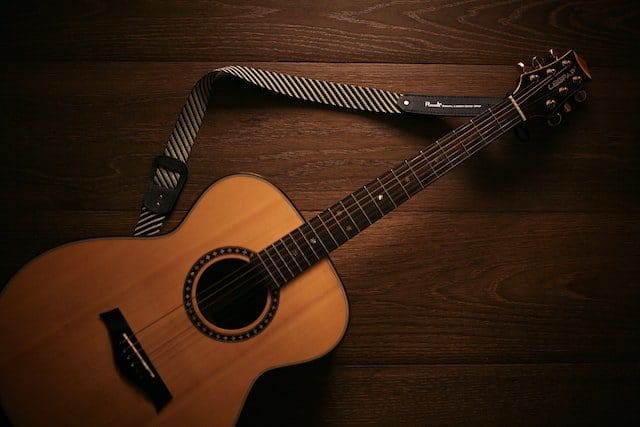Ever wondered how guitars are made? And how does the process differ between making electric and acoustic guitars? Are they made in a factory and what type of machine do they use to make your favourite Gibson guitar or fender? We all know how important a guitar is to you as a musician and it needs to feel right as well as look cool. So we aim to answer all these questions and more.
History of Guitars
This treasured string instrument is part of the chordophones family. The process of ‘plucking’ is what is used to play the guitar – of course you know that. One hand plucks the strings while the strings are simultaneously fingered with the other hand against frets, which are metal strips located on the instrument’s neck. The sound is then amplified through the body of the guitar. There are 4 types of acoustic guitars that you should be aware of;
- Flat-top steel-stringed
- Arched top
- Classic
- Flamenco
How were classical guitars made? Well, we know that the earlier guitars would have only had single strings, compared to those you would use today. A four-string variety (named guitarra latina) existed in Spain in the late thirteenth century, a 5th string was added in the 16th century and a sixth string (bass E) was added near the end of 1700s.
The person who is thought to have created the first steel-stringed acoustic guitar was a German immigrant to the United States named Christian Frederick Martin in 1833. Guitars at the time used so-called catgut strings created from the intestines of sheep. Christian, a German guitar maker created a larger guitar which aligned with the classic design of older models. You would know the brand as Martin Guitars.
The world’s oldest guitar is a vihuela, which was created by Belchior Diaz and is widely regarded as the predecessor to modern guitars. It has ten strings and is modeled after the lute in that it has ligatures that are tied in the same way that it is made of metal. It was first made in around 1590 and has ten strings.
Another company called the Gibson company, founded in 1902, produced large steel-string guitars with arched fronts and backs and in the early 1900s magnetic pickups were fitted beneath the strings by which sound traveled through a wire into an amplifier. So there were certainly a few changes made to the guitar to arrive at the type of models we know today.
Guitar Manufacturing Process
If you are wondering how acoustic guitars are made, each guitar usually follows a similar process, certainly when it comes to the type of wood. The back and sides of the guitar’s body are usually built with East Indian or Brazilian rosewood. Less expensive brands use mahogany or maple but you will run into audio issues using this type of wood.
The top (or soundboard) of the guitar is traditionally constructed of Alpine spruce, although American Sika spruce has become popular among U.S. manufacturers. Cedar and redwood are often substituted for spruce, although these woods are soft and easily damaged during construction.
The neck, which must resist distortion by the pull of the strings and changes in temperature and humidity, is constructed from mahogany and joins the body between the fourteenth and twelfth frets. Ideally, the fingerboard is made of ebony, but rosewood is often used as a less expensive alternative. Most modern guitars use strings made of some type of metal (usually steel).
Therefore, as you can see, the most important part of the guitar manufacture process is choosing which wood material you are going to make the model out of.
Simply put, once the woods are selected, the shape of the top and back of the guitar are cut in its distinguishable figure-eight design. Sound holes are then cut on the top of the instrument.
The sides are steamed to enable them to bend, and then the wood is dried in shape. Once dried, the top, bottom and sides are glued together. The neck of the guitar will either be carved or cut, and then the fingerboard is added and attached to the instrument. Frets are then attached to the fingerboard and then the tuners are placed on the guitar. But let’s dig deeper into the process.
Nitrocellulose polyurethane is applied in layers on the guitar, the neck of the guitar is added and bolted or glued into place. Finally, strings are attached and the guitar is ready to be played. And there you have it! That is how guitars are made in a factory.
Electric vs. Acoustic Guitars
There is a difference in how electric vs. acoustic guitars are made. Electric guitars tend to have lighter strings, a smaller body, and thinner necks, whereas acoustic guitars have a heavier body and a thicker neck to support the tension of heavier strings. In terms of sound, the pickups and amplifier of an electric guitar enhance the learning process as they project the sound.
How Many Guitars Are Made Each Year
In 2021, there were 2,630,950 guitars made in the US, and even in 2020, the figure was still roughly 2,472,700, compared to 2,489,390 in 2019. So it appears that guitar manufacturing wasn’t affected by the pandemic.
It is obvious that handcrafting guitars is a time and labor-intensive method of production. A guitar luthier is a skilled craftsman who makes and repairs guitars. Some common tools used by luthiers today are a Band saw, Drill Press, Table Saw, Stationary Sander, Jointer, C Clamps, Sanding Board, Column Sander, Power Planer, Dovetail Saw, Scraper blades, Hand Files, Router, and Sand Paper.
The Average Price Of A Guitar
Most guitarists will buy somewhere in the $500 to $1,500 range. Beginners usually spend between $100 and $500. However, if you have the budget then you may choose to spend anything from $1,500 to $10,000. It really depends on where you are in your music career and what your funds look like. If you can afford the best of the best, then go for it.
Guitar Manufacturers In USA & UK
There are obviously too many to mention in this article and we have already covered Martins Guitars and Gibson, but here are some other noteworthy mentions.
USA Brands
- Harmony
- National Guitars
- Dobro
- Fender
- Ovation
UK Brands
- Brian May Guitars
- Faith
- Tanglewood Guitars
- Atkin Guitars
- Kinkade Guitars
- PJD Guitars
Closing Thoughts
Every company will do their own due diligence to make sure that they provide their customers with flawless guitars. There is a lot to be said about the mechanization of making a guitar and the process undoubtedly moves at a faster pace than using just one craftsman alone. However what is clear is that each guitar takes time and effort to make and great care is given to this undertaking over 400 years old.











